POSCA Surface Preparation & Fixation Guide
Discover how to get the best out of your POSCA markers. Learn about their parts, care instructions, and how to use them effectively on different surfaces through our easy-to-follow visual guides.
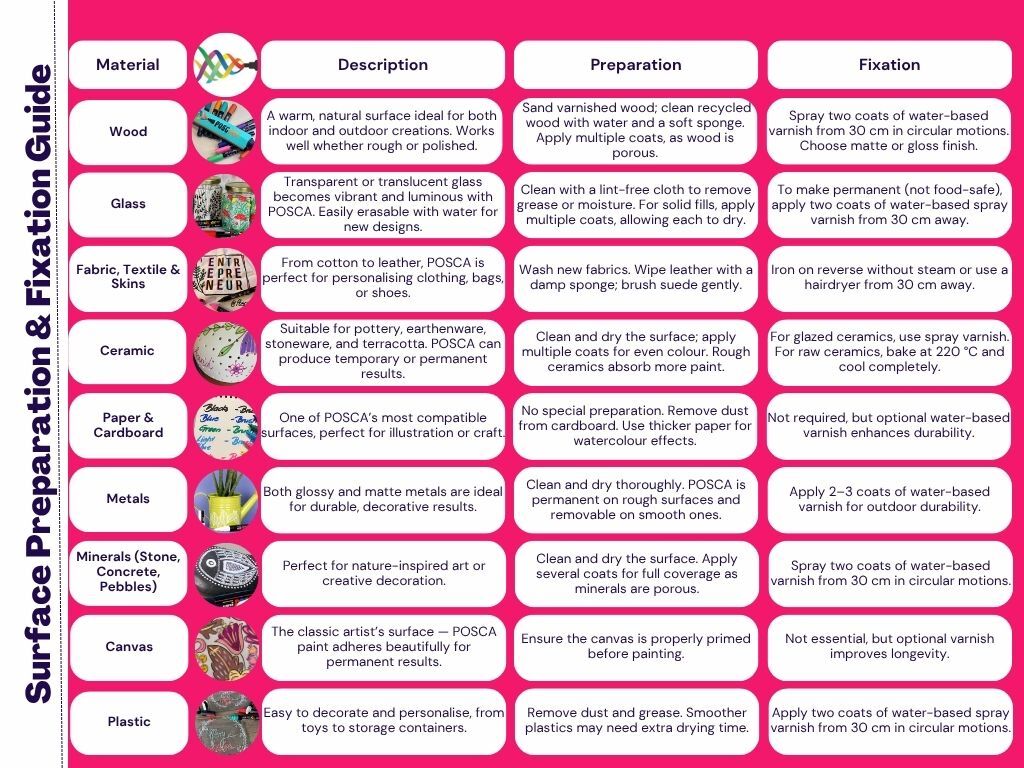 |
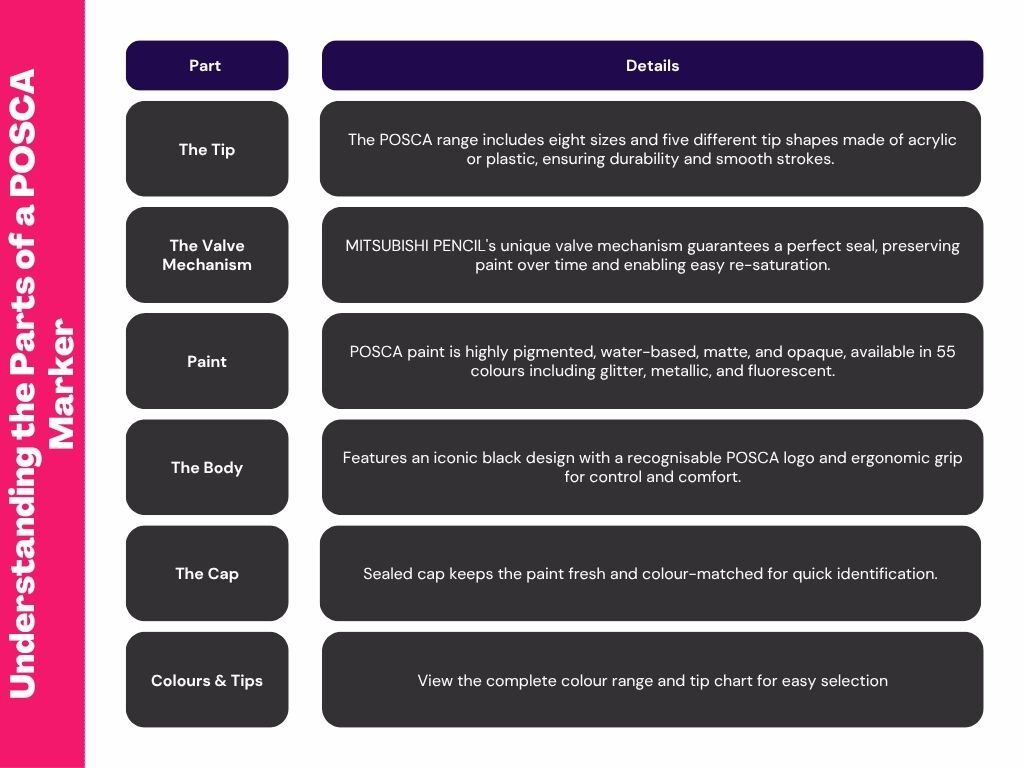 |
Using POSCA Markers Effectively & Care Maintenance
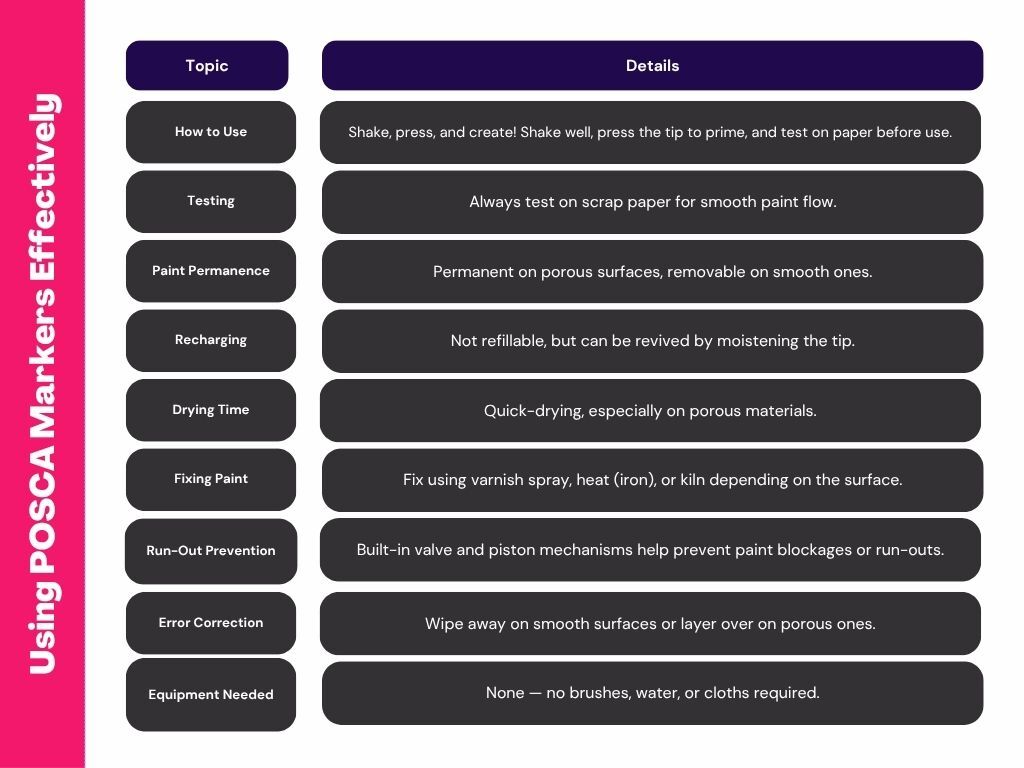 |
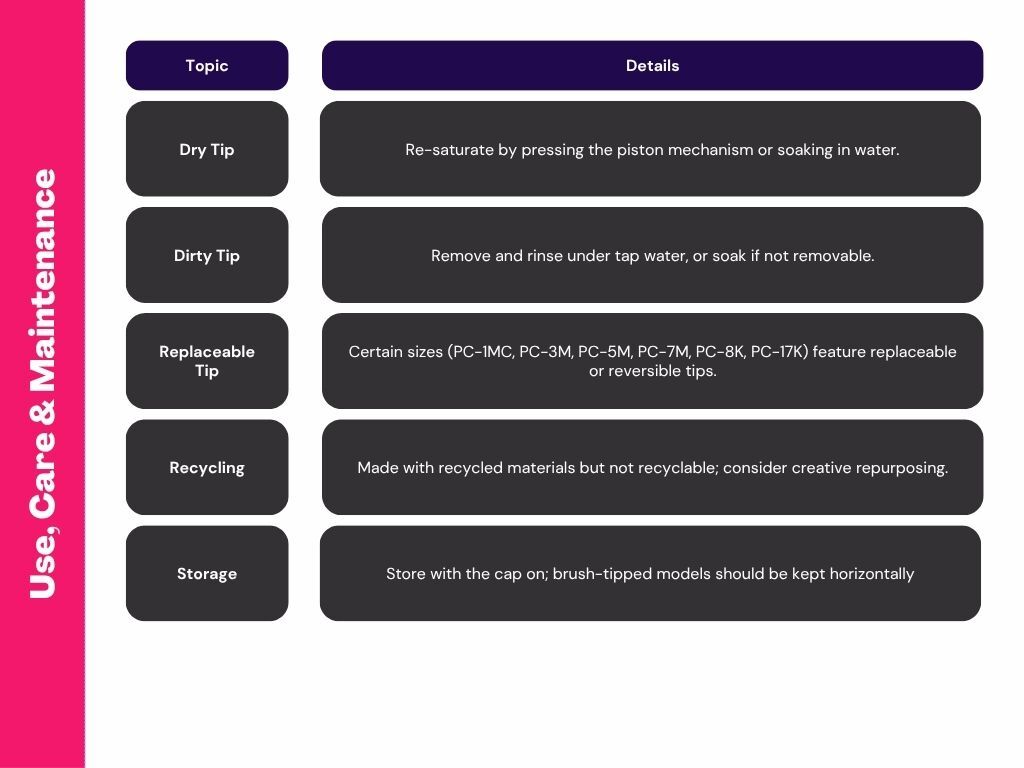 |
Creative Techniques & Safety Tips
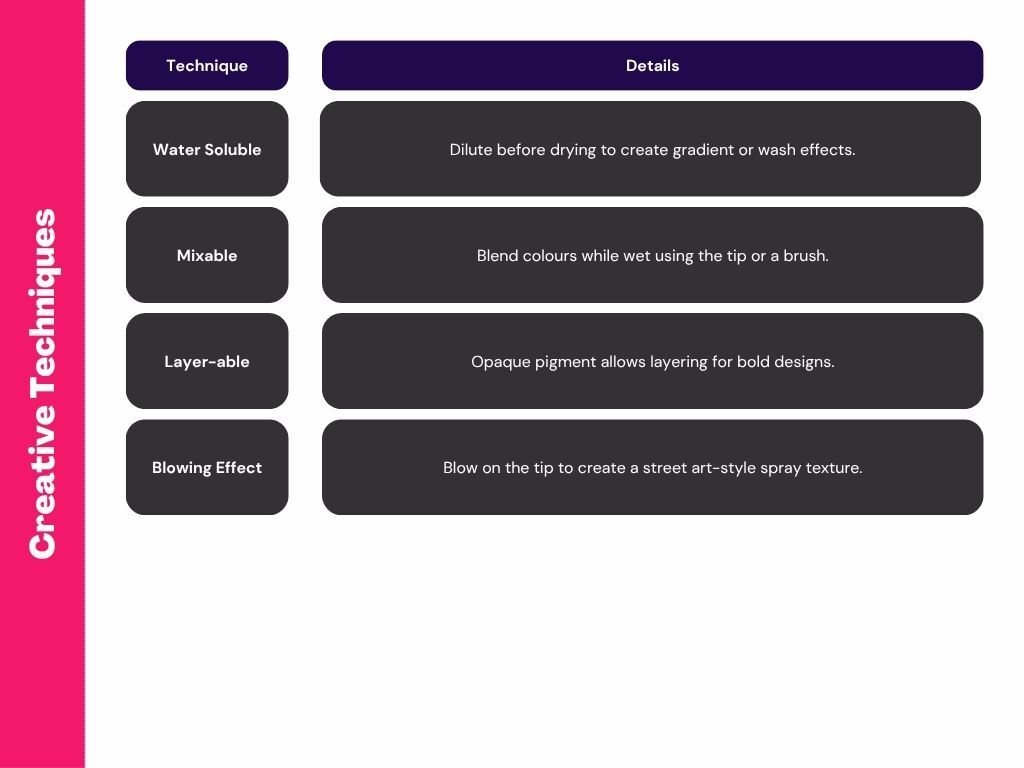 |
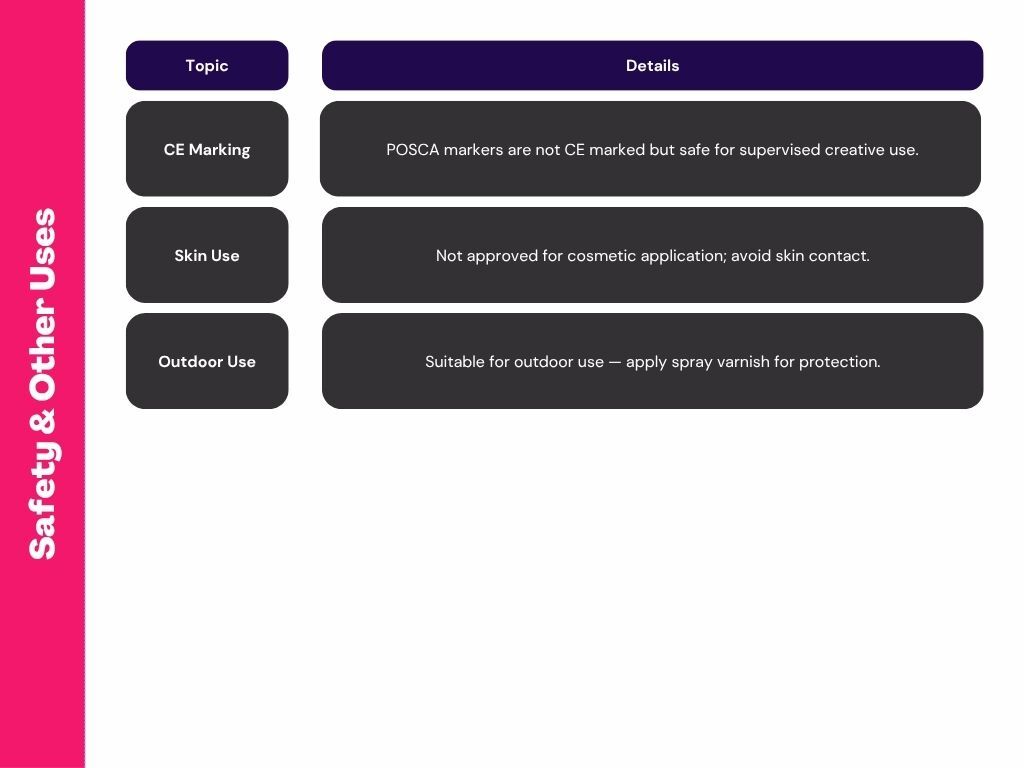 |







